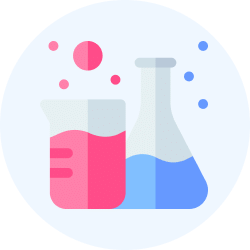Chemistry Exam > Chemistry Questions > An intermediate formed during the hydroformyl...
Start Learning for Free
An intermediate formed during the hydroformylation of olefins using Co2(CO)8 as catalyst is:
- a)HCo(CO)8
- b)H4Co(CO)3
- c)H2Co(CO)4
- d)HCo(CO)4
Correct answer is option 'D'. Can you explain this answer?
Most Upvoted Answer
An intermediate formed during the hydroformylation of olefins using Co...
Hydroformylation of Olefins and Co2(CO)8 as Catalyst
Hydroformylation is an industrial process that involves the reaction of an olefin with carbon monoxide and hydrogen to form an aldehyde. The reaction is catalyzed by transition metal complexes, with Co2(CO)8 being one of the most commonly used catalysts. During the reaction, an intermediate is formed which is HCo(CO)4.
Explanation
The hydroformylation reaction involves the insertion of a carbonyl group into the olefin, which is initiated by the Co2(CO)8 catalyst. The first step in the reaction is the formation of a cobalt carbonyl complex, which is followed by the insertion of the olefin into the Co-C bond. This results in the formation of the HCo(CO)4 intermediate.
The HCo(CO)4 intermediate is highly reactive and can undergo further reactions, such as the migration of the carbonyl group to form a new Co-C bond. This leads to the formation of higher-order cobalt carbonyl complexes, which can then react with hydrogen and carbon monoxide to form the aldehyde product.
Conclusion
In summary, the intermediate formed during the hydroformylation of olefins using Co2(CO)8 as a catalyst is HCo(CO)4. This intermediate is crucial for the reaction to proceed, as it undergoes further reactions to form higher-order cobalt carbonyl complexes, which are responsible for the formation of the aldehyde product.
Hydroformylation is an industrial process that involves the reaction of an olefin with carbon monoxide and hydrogen to form an aldehyde. The reaction is catalyzed by transition metal complexes, with Co2(CO)8 being one of the most commonly used catalysts. During the reaction, an intermediate is formed which is HCo(CO)4.
Explanation
The hydroformylation reaction involves the insertion of a carbonyl group into the olefin, which is initiated by the Co2(CO)8 catalyst. The first step in the reaction is the formation of a cobalt carbonyl complex, which is followed by the insertion of the olefin into the Co-C bond. This results in the formation of the HCo(CO)4 intermediate.
The HCo(CO)4 intermediate is highly reactive and can undergo further reactions, such as the migration of the carbonyl group to form a new Co-C bond. This leads to the formation of higher-order cobalt carbonyl complexes, which can then react with hydrogen and carbon monoxide to form the aldehyde product.
Conclusion
In summary, the intermediate formed during the hydroformylation of olefins using Co2(CO)8 as a catalyst is HCo(CO)4. This intermediate is crucial for the reaction to proceed, as it undergoes further reactions to form higher-order cobalt carbonyl complexes, which are responsible for the formation of the aldehyde product.
Free Test
FREE
| Start Free Test |
Community Answer
An intermediate formed during the hydroformylation of olefins using Co...
18e

|
Explore Courses for Chemistry exam
|

|
Question Description
An intermediate formed during the hydroformylation of olefins using Co2(CO)8 as catalyst is:a)HCo(CO)8b)H4Co(CO)3c)H2Co(CO)4d)HCo(CO)4Correct answer is option 'D'. Can you explain this answer? for Chemistry 2025 is part of Chemistry preparation. The Question and answers have been prepared according to the Chemistry exam syllabus. Information about An intermediate formed during the hydroformylation of olefins using Co2(CO)8 as catalyst is:a)HCo(CO)8b)H4Co(CO)3c)H2Co(CO)4d)HCo(CO)4Correct answer is option 'D'. Can you explain this answer? covers all topics & solutions for Chemistry 2025 Exam. Find important definitions, questions, meanings, examples, exercises and tests below for An intermediate formed during the hydroformylation of olefins using Co2(CO)8 as catalyst is:a)HCo(CO)8b)H4Co(CO)3c)H2Co(CO)4d)HCo(CO)4Correct answer is option 'D'. Can you explain this answer?.
An intermediate formed during the hydroformylation of olefins using Co2(CO)8 as catalyst is:a)HCo(CO)8b)H4Co(CO)3c)H2Co(CO)4d)HCo(CO)4Correct answer is option 'D'. Can you explain this answer? for Chemistry 2025 is part of Chemistry preparation. The Question and answers have been prepared according to the Chemistry exam syllabus. Information about An intermediate formed during the hydroformylation of olefins using Co2(CO)8 as catalyst is:a)HCo(CO)8b)H4Co(CO)3c)H2Co(CO)4d)HCo(CO)4Correct answer is option 'D'. Can you explain this answer? covers all topics & solutions for Chemistry 2025 Exam. Find important definitions, questions, meanings, examples, exercises and tests below for An intermediate formed during the hydroformylation of olefins using Co2(CO)8 as catalyst is:a)HCo(CO)8b)H4Co(CO)3c)H2Co(CO)4d)HCo(CO)4Correct answer is option 'D'. Can you explain this answer?.
Solutions for An intermediate formed during the hydroformylation of olefins using Co2(CO)8 as catalyst is:a)HCo(CO)8b)H4Co(CO)3c)H2Co(CO)4d)HCo(CO)4Correct answer is option 'D'. Can you explain this answer? in English & in Hindi are available as part of our courses for Chemistry.
Download more important topics, notes, lectures and mock test series for Chemistry Exam by signing up for free.
Here you can find the meaning of An intermediate formed during the hydroformylation of olefins using Co2(CO)8 as catalyst is:a)HCo(CO)8b)H4Co(CO)3c)H2Co(CO)4d)HCo(CO)4Correct answer is option 'D'. Can you explain this answer? defined & explained in the simplest way possible. Besides giving the explanation of
An intermediate formed during the hydroformylation of olefins using Co2(CO)8 as catalyst is:a)HCo(CO)8b)H4Co(CO)3c)H2Co(CO)4d)HCo(CO)4Correct answer is option 'D'. Can you explain this answer?, a detailed solution for An intermediate formed during the hydroformylation of olefins using Co2(CO)8 as catalyst is:a)HCo(CO)8b)H4Co(CO)3c)H2Co(CO)4d)HCo(CO)4Correct answer is option 'D'. Can you explain this answer? has been provided alongside types of An intermediate formed during the hydroformylation of olefins using Co2(CO)8 as catalyst is:a)HCo(CO)8b)H4Co(CO)3c)H2Co(CO)4d)HCo(CO)4Correct answer is option 'D'. Can you explain this answer? theory, EduRev gives you an
ample number of questions to practice An intermediate formed during the hydroformylation of olefins using Co2(CO)8 as catalyst is:a)HCo(CO)8b)H4Co(CO)3c)H2Co(CO)4d)HCo(CO)4Correct answer is option 'D'. Can you explain this answer? tests, examples and also practice Chemistry tests.

|
Explore Courses for Chemistry exam
|

|
Signup for Free!
Signup to see your scores go up within 7 days! Learn & Practice with 1000+ FREE Notes, Videos & Tests.























